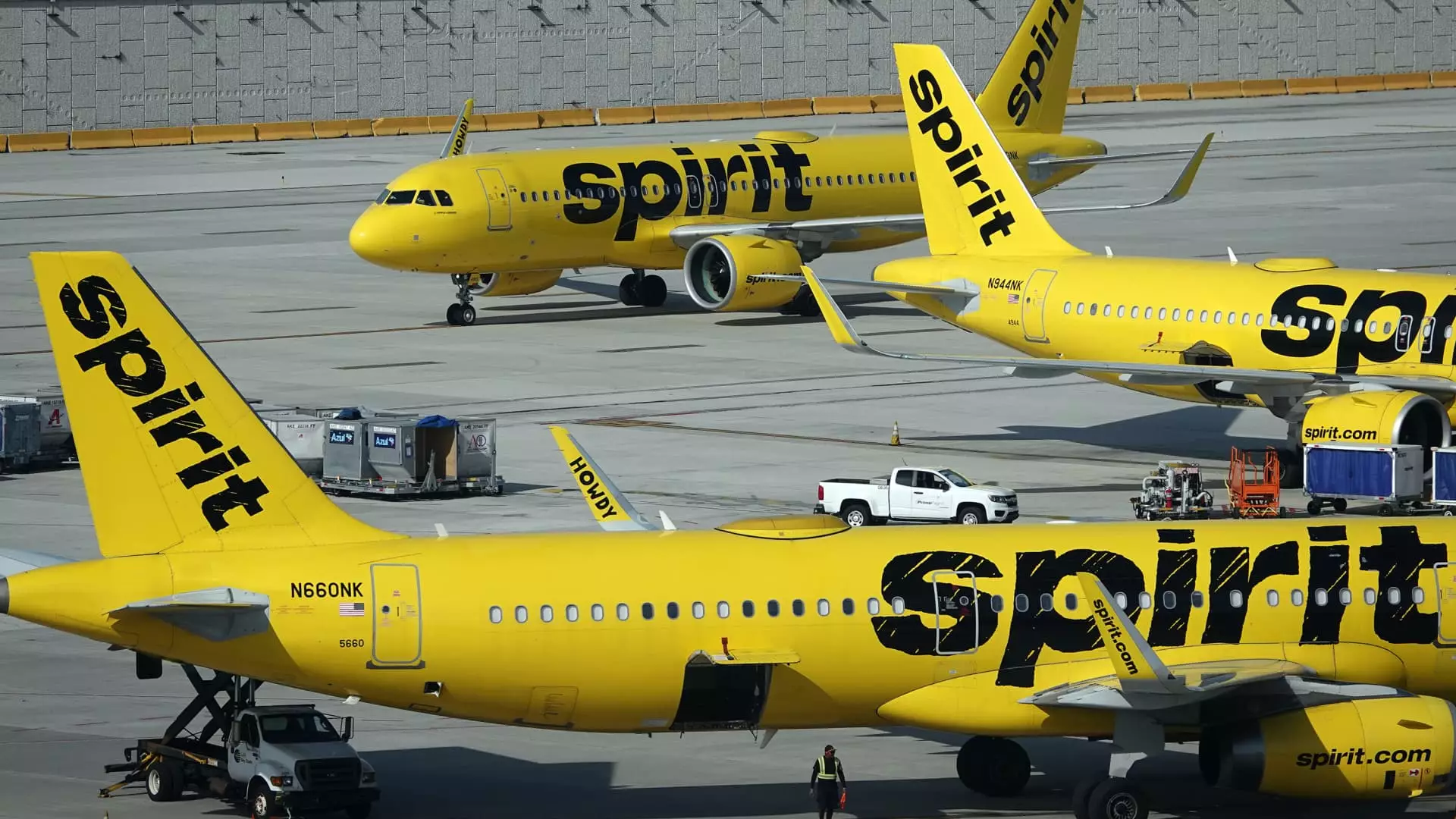In a bid to stabilize its precarious financial situation, Spirit Airlines has announced a series of aggressive cost-reduction strategies that have instigated a remarkable surge in its stock prices. Just last Friday, the airline’s shares soared by 16%, closing at $2.79. The airline’s decision to sell 23 outdated Airbus aircraft is expected to yield $519 million, as announced in a formal securities filing. This financial maneuver not only promises to inject much-needed cash into Spirit’s dwindling reserves but also signifies a strategic shift in how the budget carrier is managing its fleet amidst ongoing challenges.
Challenges in the Wake of the Pandemic
The airline industry has undergone a tumultuous transformation following the COVID-19 pandemic, with Spirit Airlines acutely feeling the ramifications. The carrier has been grappling with altered travel demand patterns and operational hiccups, particularly the grounding of multiple aircraft powered by Pratt & Whitney engines. Despite the positive movement in share prices from last week’s announcements, it is critical to note that Spirit’s stock has plummeted over 80% this year, largely due to setbacks like the rejection of its merger bid by JetBlue Airways. Such issues underscore the ongoing volatility in the airline sector and Spirit’s struggle to maintain profitability.
In addition to aircraft sales, Spirit Airlines has revealed its plans for significant job cuts, which are aimed at reducing operational expenses by an estimated $80 million. Although the company did not disclose specific numbers on job reductions, it confirmed that its overall capacity for 2025 will take a hit, seeing reductions in the mid-teens percentage-wise compared to its 2023 levels. Notably, the airline began furloughing approximately 200 pilots this past September. However, the situation for flight attendants appears more stable, as many have opted for voluntary leave, positioning them favorably during these cutbacks.
Amid the chaos, a silver lining has emerged for Spirit Airlines: murmurs of revived merger discussions with Frontier Airlines. Following a previous merger agreement that dissolved in the face of JetBlue’s acquisition proposal, the rekindled talks have injected optimism into Spirit’s marketplace, as evidenced by the stock price increase. The potential merger could reshape Spirit’s future, offering much-needed operational synergies and a stronger competitive stance against larger carriers. For now, both airlines have remained tight-lipped, igniting speculations and interest across the industry.
As Spirit Airlines navigates this turbulent period, the recent forecast of a third-quarter negative operating margin of 24.5% (less dire than an anticipated 29% margin) indicates a slow improvement, signaling the possibility of better times ahead. However, the air travel landscape continues to evolve, and the company’s future remains uncertain and dependent on a variety of external factors, including the ongoing recovery in the travel market and potential regulatory responses related to any potential mergers. Moving forward, the success of Spirit Airlines will hinge on its ability to adapt, innovate, and execute its Strategic Restructuring Plan effectively.

